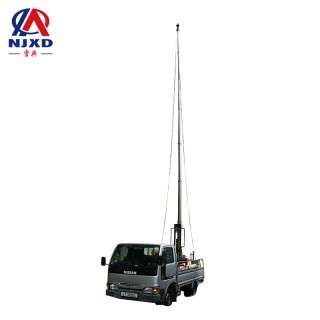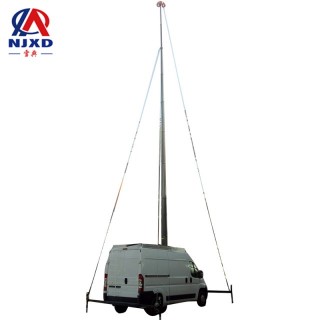NEWS
Classification and transmission means of data communication emergency communication base station
Time:2020-12-14 View:

Classification
By information
Telephone communication system
Data communication system
Cable TV system
Divided by modulation
Baseband Transmission
Modulation transmission
Divided by transmission signal characteristics
Analog communication system
Digital communication system

Means of transmission
Cable Communication
Twisted pair, coaxial cable, etc. Local calls and long-distance communications. Modulation mode: SSB/FDM. PCM time division multi-channel digital baseband transmission technology based on coaxial. Optical fiber will gradually replace coaxial.
Microwave relay communication
Compared with coaxial cable, it is easy to set up, with small investment and short cycle. Analog telephone microwave communication mainly adopts SSB/FM/FDM modulation with communication capacity of 6000 channels/channel. Digital microwave adopts BPSK, QPSK and QAM modulation technology. Multi-level modulation technologies such as 64QAM and 256QAM are adopted to improve microwave communication capacity, and 1920~7680 PCM digital telephones can be transmitted in 40m channels.
Optical Fiber Communication
It takes advantage of the long distance transmission characteristics of laser in optical fiber, and has the characteristics of large communication capacity, long communication distance and strong anti-interference. It is used for local, long-distance and trunk transmission, and gradually develops user optical fiber communication network. Based on long-wave laser and single-mode fiber, the number of optical fiber communication channels per channel exceeds tens of thousands, and the communication fiber itself is very powerful. Over the past decades, fiber optical communication technology has developed rapidly and has various device applications, such as access equipment, photoelectric conversion equipment, transmission equipment, switching equipment, network equipment, etc. Optical Fiber Communication equipment consists of photoelectric conversion unit and digital signal processing unit.
Satellite communication
Long communication distance, large transmission capacity, large coverage, no geographical restrictions and high reliability. Mature technologies use analog modulation, frequency division multiplexing, and Frequency Division Multiple Access. Digital satellite communication adopts digital modulation, time division multiplexing and timely division multiple access.
Mobile communication
Mobile communication is the communication between Mobile bodies or between Mobile bodies and fixed bodies. The moving body can be a person or an object in the moving state such as a car, train, ship, radio, etc. The mobile communication system consists of two parts:
(1) Space System
(2) ground system: ① satellite mobile radio station and antenna; ② Gate station and base station.
Since the birth of the mobile communication system in the 1980 s, it will generally go through the development process of 5 generations by 2020, and will transition from the 3rd generation to the 4th generation (4G) by 2010. To 4G, in addition to the cellular telephone system, broadband wireless access system, millimeter wave LAN, intelligent transmission system (ITS) and stratosphere platform (HAPS) system will be put into use. The most obvious trend of future generations of mobile communication systems is to require high data rate, high mobility and seamless roaming. Achieving these requirements will face greater technical challenges. In addition, system performance (such as cellular scale and transmission rate) will largely depend on the frequency. Considering these technical problems, some systems will focus on providing high data rates, while others will focus on enhancing mobility or expanding coverage.
From the perspective of users, access technologies that can be used include: cellular mobile wireless systems, such as 3G; Cordless systems, such as DECT; Short-range communication systems, such as Bluetooth and DECT data systems; wireless local area network (WLAN) system; Fixed wireless access or wireless local ring system; Satellite system; Broadcasting system, such as DAB and DVB-T;ADSL and Cable Modem.

CATEGORY
NEWS
- Development History of data communication emergency communication ups and downs
- Classification and transmission means of data communication emergency communication base station
- Communication system structure of lifting emergency data communication
- Basic Theory of data communication emergency lifting antenna
- Synchronization mode and characteristics of emergency lifting data communication